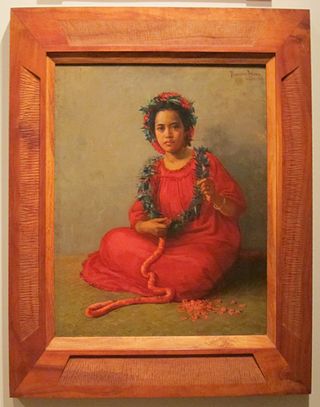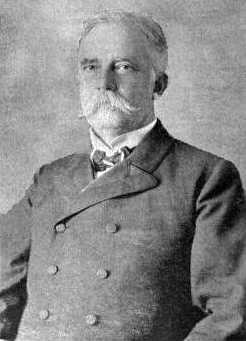Related Research Articles

Honolulu is the capital and most populous city of the U.S. state of Hawaii, which is in the Pacific Ocean. It is the unincorporated county seat of the consolidated City and County of Honolulu, situated along the southeast coast of the island of Oʻahu, and is the westernmost and southernmost major U.S. city. Honolulu is Hawaii's main gateway to the world. It is also a major hub for business, finance, hospitality, and military defense in both the state and Oceania. The city is characterized by a mix of various Asian, Western, and Pacific cultures, reflected in its diverse demography, cuisine, and traditions.

Makiki is an area of Honolulu, Hawaiʻi, located northeast of downtown Honolulu, stretching east to west from Punahou Street to Pensacola Street and north to south from Round Top Drive/Makiki Heights Drive to Lunalilo Freeway. Punchbowl, an extinct tuff cone, and Tantalus overlook the Makiki.

The Honolulu Museum of Art is an art museum in Honolulu, Hawaiʻi. The museum is the largest of its kind in the state, and was founded in 1922 by Anna Rice Cooke. The museum has one of the largest single collections of Asian and Pan-Pacific art in the United States, and since its official opening on April 8, 1927, its collections have grown to more than 55,000 works of art.

Masami Teraoka is an American contemporary artist. His work includes Ukiyo-e-influenced woodcut prints and paintings in watercolor and oil. He is known for work that merges traditional Edo-style aesthetics with icons of American culture.

Deborah Kay Butterfield is an American sculptor. Along with her artist-husband John Buck, she divides her time between a farm in Bozeman, Montana, and studio space in Hawaii. She is known for her sculptures of horses made from found objects, like metal, and especially pieces of wood.

Hiroki Morinoue is an American artist of Japanese descent who has helped to pioneer in the United States the fusion of western Impressionism with modern Japanese design.

Satoru Abe is a Japanese American sculptor and painter.

Theodore Wores was an American painter born in San Francisco, son of Joseph Wores and Gertrude Liebke. His father worked as a hat manufacturer in San Francisco.

Jedd Garet is an American sculptor, painter and printmaker, who was born in 1955. He was raised in California, studied at the Rhode Island School of Design, and received a BFA from the School of Visual Arts in New York City.

John Buck is an American sculptor and printmaker who was born in Ames, Iowa.

Honolulu County, officially known as the City and County of Honolulu, is a consolidated city-county in the U.S. state of Hawaii. The city-county includes both Urban Honolulu and the rest of the neighborhoods on the island of Oʻahu, as well as several minor outlying islands, including all of the Northwestern Hawaiian Islands except Midway Atoll.

The Metcalf Chateau, also known as The Group of Seven, was a group of Asian-American artists with ties to Honolulu. The name is derived from a house slated for demolition on Metcalf Street in Honolulu, in which they exhibited in 1954. The exhibition was seen by Robert Griffin, director of the Honolulu Academy of Arts, who arranged for the artists to have a group show at the museum. The group's members were Satoru Abe, Bumpei Akaji (1921-2002), Edmund Chung, Tetsuo Ochikubo (1923-1975), Jerry T. Okimoto (1924-1998), James Park, and Tadashi Sato (1923-2005).

Kapiʻolani Medical Center for Women and Children is part of Hawaii Pacific Health's network of hospitals. It is located in Honolulu, Hawaii, within the residential inner-city district of Makiki. Kapiʻolani Medical Center is Hawaii's only children's hospital with a team of physicians and nurses and specialized technology trained specifically to care for children, from infants to young adults. It is the state's only 24-hour pediatric emergency department, pediatric intensive care unit and adolescent unit. The hospital provides comprehensive pediatric specialties and subspecialties to infants, children, teens, and young adults aged 0–21 throughout Hawaii.

Charles Montague Cooke was a businessman during the Kingdom of Hawaii, Republic of Hawaii, and Territory of Hawaii.

Spalding House, also known as the Cooke-Spalding House was an art museum and sculpture garden in Honolulu, Hawaii. It was called Nuumealani by Anna Rice Cooke, who commissioned it. The house and gardens constituted a 3+1⁄2-acre former art museum in the Makiki Heights district of Honolulu.

Jason Jun Teraoka is a figurative painter who was born in Kapaʻa, Hawaiʻi. He is a fourth-generation Japanese-American who lives and works in Honolulu, and is largely self-taught. In 2000, he received the Hawaii State Foundation on Culture and the Arts Arts Acquisition Award, and in 2001 he received the Reuben Tam Award for Painting from the Honolulu Museum of Art.
The Biennial of Hawaii Artists is an invitational exhibition of six or seven Hawaii artists that has been held at Spalding House since 1993. It was originally organized by The Contemporary Museum, Honolulu and known as “The Contemporary Museum Biennial of Hawaii Artists”. In 2011, The Contemporary Museum, Honolulu became part of the Honolulu Museum of Art, with the latter institution continuing the biennial.

Deborah Gottheil Nehmad is an American artist and attorney.

The Capitol Modern Museum, formerly named the Hawaii State Art Museum, is a small art gallery located on the second floor of the No. 1 Capitol District Building in downtown Honolulu, Hawaii, United States. Long known as HiSAM, the museum is operated by the Hawaii State Foundation on Culture and the Arts.
References
- ↑ "History of the Spalding House". The Contemporary Museum, Honolulu web site. Archived from the original on May 2, 2010. Retrieved May 4, 2010.
- ↑ "Exhibitions First Hawaiian Center". The Contemporary Museum, Honolulu web site. Archived from the original on April 26, 2010. Retrieved May 4, 2010.
- ↑ Burlingame, Burl, “Art museums sign off on merger agreement”, Honolulu Star-Advertiser, May 3, 2011, p. B2